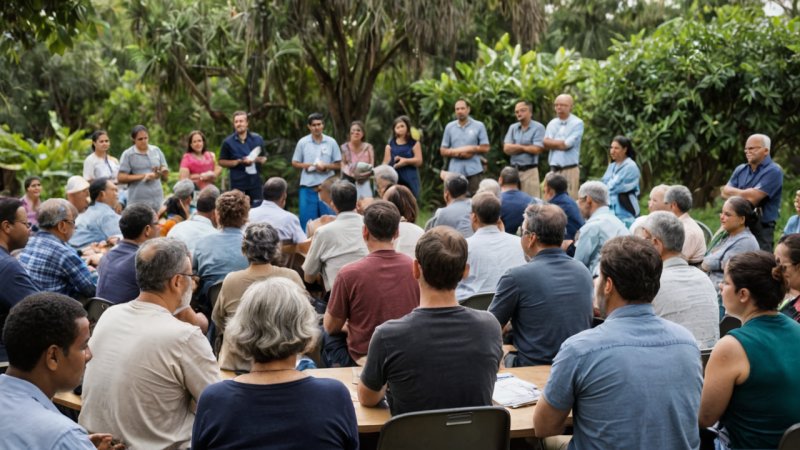Introduction
Climate change poses significant challenges to community development efforts worldwide. In this article, you will learn how to advocate for climate resilience in your community. We will explore actionable steps that you can take to raise awareness, engage your community, and promote sustainable practices that mitigate the impacts of climate change.
Step 1: Educate Yourself and Others
Understanding the effects of climate change on your community is the first step towards advocacy. Knowledge empowers you to engage others effectively.
- Research local impacts: Investigate how climate change affects your area, from rising sea levels to extreme weather events.
- Stay informed: Follow reliable sources such as scientific journals, climate advocacy organizations, and local news.
- Share your findings: Create pamphlets, host discussions, or utilize social media to spread awareness.
Step 2: Build a Coalition
Collaboration amplifies your voice. Connect with like-minded individuals and organizations to form a coalition focused on climate resilience.
- Identify allies: Look for local NGOs, community leaders, and concerned citizens who share your vision.
- Organize meetings: Hold regular gatherings to discuss goals, share information, and strategize actions.
- Create a mission statement: Define your coalition’s purpose and objectives to unify your efforts.
Step 3: Advocate for Policy Change
Effective advocacy often requires policy changes at local, state, or national levels. Here’s how to make your voice heard.
- Research existing policies: Understand the current regulations and programs related to climate change in your area.
- Draft proposals: Collaborate with experts to create policy recommendations that address climate resilience.
- Engage with policymakers: Schedule meetings with local representatives to present your coalition’s proposals and advocate for change.
Step 4: Promote Sustainable Practices
Encouraging sustainable practices within your community can significantly reduce the local impact of climate change.
- Organize workshops: Host events that teach sustainable practices such as composting, energy conservation, and water management.
- Launch community initiatives: Start projects like community gardens, tree planting days, or recycling drives to foster sustainability.
- Collaborate with local businesses: Encourage local businesses to adopt sustainable practices and support them in their efforts.
Step 5: Raise Awareness Through Campaigns
Awareness campaigns can effectively engage the wider community in climate resilience efforts.
- Use social media: Create engaging content to share on platforms like Facebook, Instagram, and Twitter.
- Organize events: Plan community events such as clean-up days, climate marches, or film screenings to draw attention to climate issues.
- Utilize local media: Connect with local newspapers, radio stations, and TV channels to share your coalition’s message.
Step 6: Evaluate and Adapt
Continuous evaluation helps ensure the effectiveness of your advocacy efforts.
- Set measurable goals: Define clear objectives for your initiatives to track progress.
- Gather feedback: Regularly seek input from coalition members and the community to identify areas for improvement.
- Adjust strategies: Be flexible and willing to adapt your approach based on feedback and changing circumstances.
Conclusion
Advocating for climate resilience in community development requires dedication and collaboration. By educating yourself and others, building a coalition, advocating for policy change, promoting sustainable practices, raising awareness through campaigns, and continuously evaluating your efforts, you can make a significant impact. Remember, every small action contributes to a larger movement for a sustainable future.






